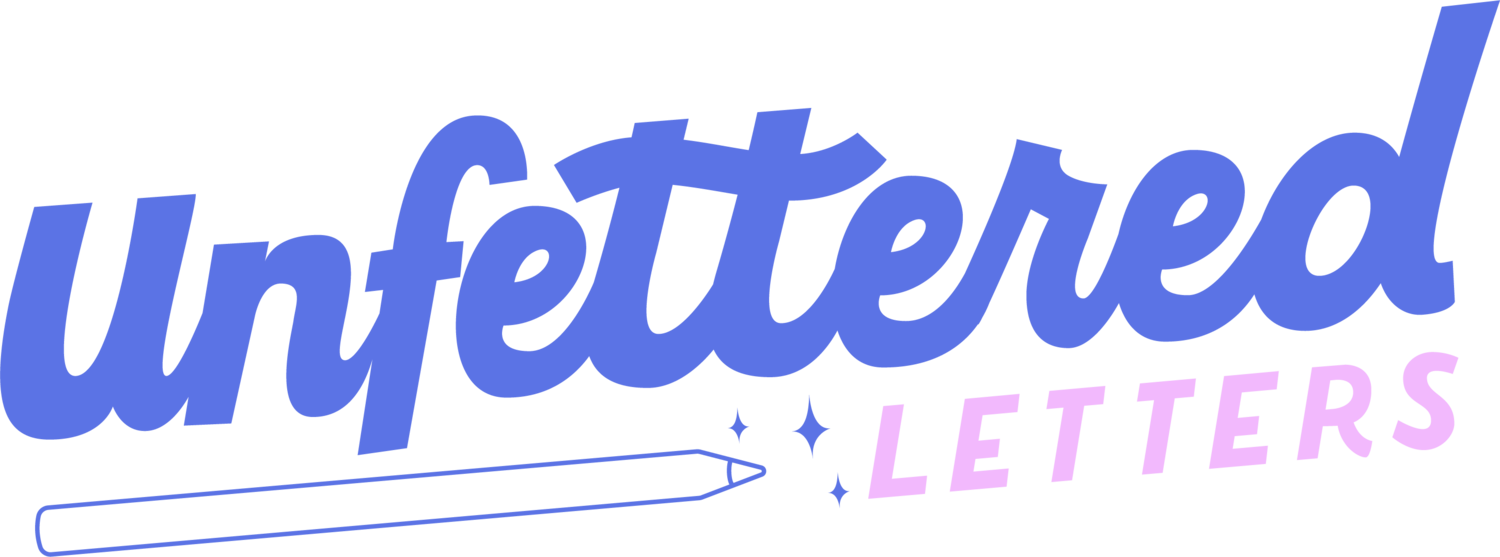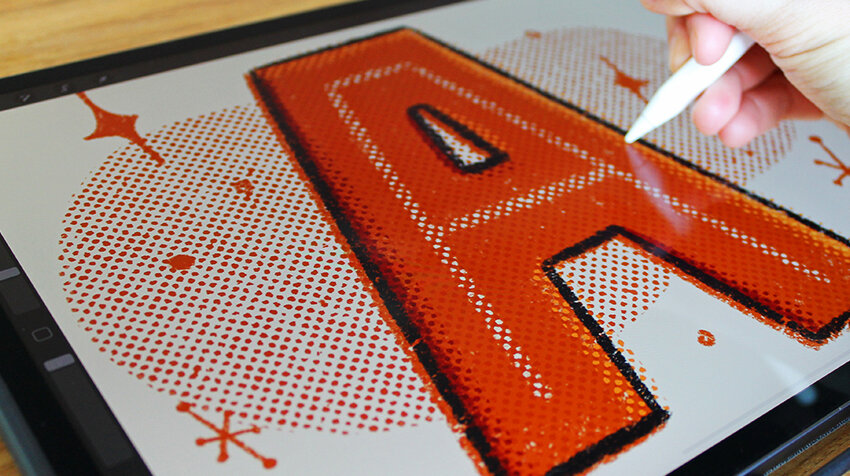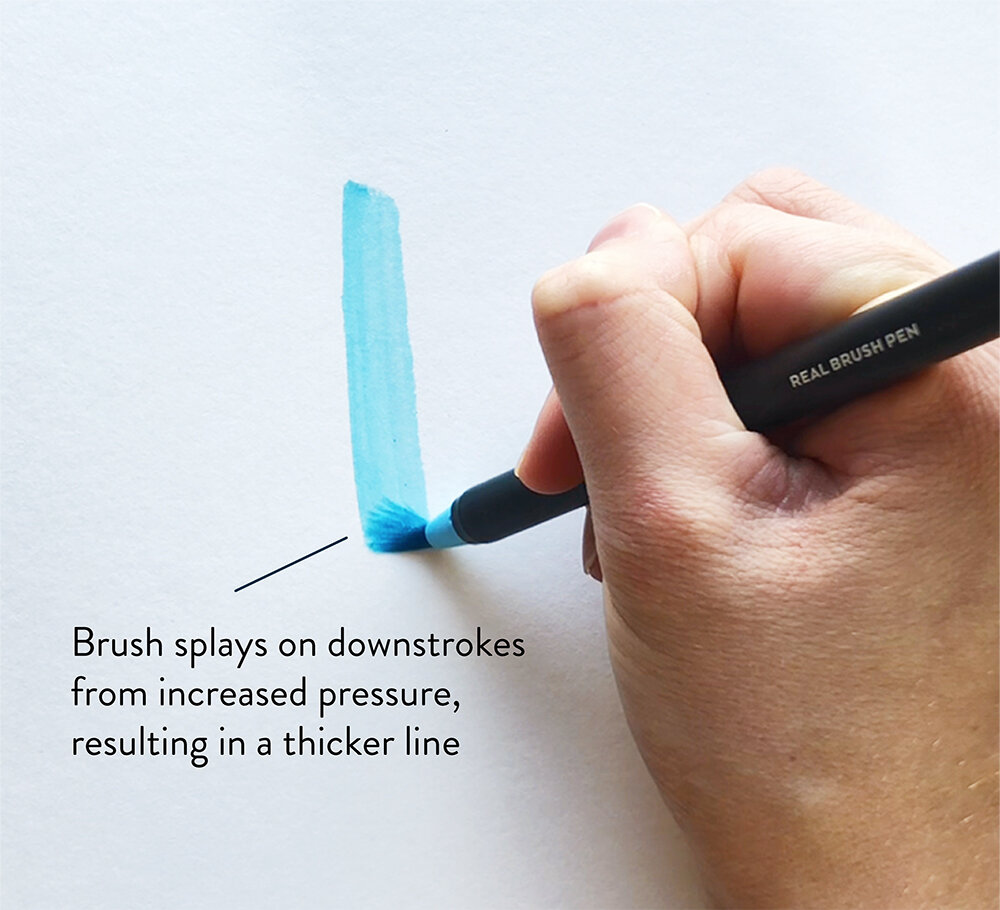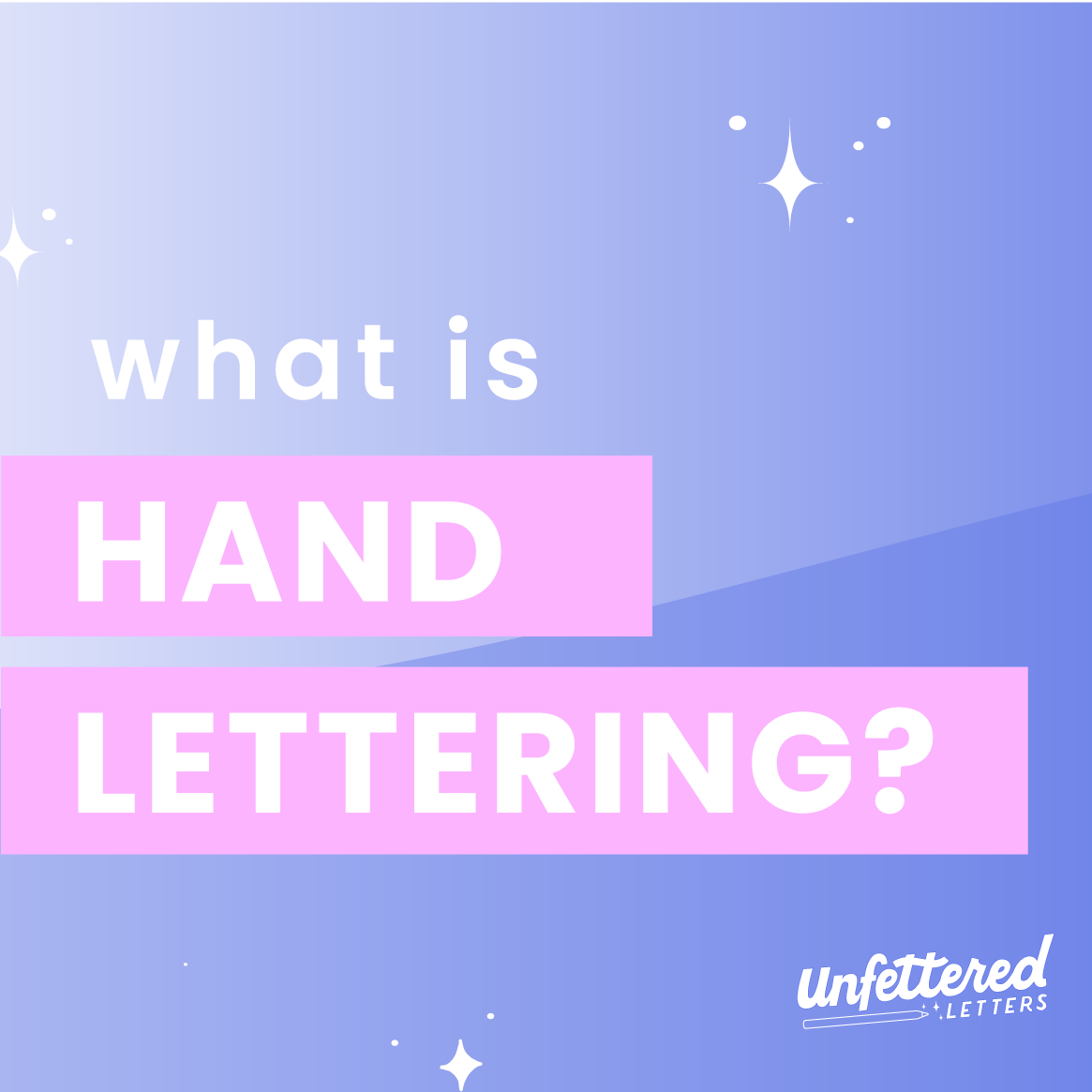What is Hand Lettering?
If you’ve been on Pinterest, Instagram, or in a big box store anytime recently, chances are you’ve seen hand lettering.
This niche art form has been gaining popularity and exploding in the DIY, craft, and digital design world, but there’s some confusion around what exactly “hand lettering” means.
Is hand lettering the same as creating fonts? What’s the difference between hand lettering and calligraphy?
In this post, I’ll break down the common misconceptions so you know exactly what lettering is and how to get started learning how to do it yourself!
Hand Lettering, Calligraphy, and Typography
Hand lettering, calligraphy, and typography are 3 commonly confused terms.
Although they all have to do with creating stylized letterforms, the methods and results can be very different. Let’s start with defining each one:
Hand lettering, or just lettering, is the art of drawing letters in any style.
Calligraphy is the art of writing letters with pressure-sensitive tools, usually in a script style. Today, you’ll also often see people call it “modern calligraphy,” “brush calligraphy,” or “brush lettering” (yup, this is actually a form of calligraphy, not lettering!)
Typography is the art of creating repeatable systems of letters (fonts & typefaces) that can be utilized by a machine.
Let’s look at what each of those means in a little more detail, starting with the oldest form—calligraphy.
Calligraphy
Calligraphy is a traditional art form that goes back thousands of years. What we know as calligraphy today comes from the shapes that were made by the tools scribes used to write, such as ink and brushes.
The brushes originally used for calligraphy give it its defining feature: that downstrokes (strokes where your hand moves in a downward direction on the page) in letters are thick, while upstrokes (strokes where your hand moves in an upward direction on the page) in letters are thin.
This makes perfect sense if you think about holding a brush. When you move your hand downward, you naturally exert more pressure on it. More pressure means the bristles of the brush splay outward more, giving you a wider line:
The opposite is true when you move your hand upward. Less pressure is exerted as you move your hand away from your body, the brush bristles come back together, and a thinner line is made on the page:
Calligraphy Tools
All of this means that to do calligraphy, you have to use specific tools to write with. You need tools that will give you those thick and thin lines based on your writing angle and motion.
This includes paintbrushes, pointed nibs with holders, fountain pens, and perhaps most surprisingly… brush pens.
Yep, if you’ve been using Tombows or other brush pens to create letters, you are doing calligraphy, not hand lettering, despite what all those blogs and Pinterest accounts have told you 😉
Which brings us to…
Calligraphy Styles
If you’re in the category of artists using tools like Tombows or other brush pens to create letters, you may feel like your art still doesn’t really look like “calligraphy.”
That might be because you’re using a more modern style. Most calligraphy that you see these days is one of two types:
Traditional calligraphy uses traditional tools like a pointed pen and strictly follows a specific style (i.e. Copperplate).
Modern calligraphy includes the stuff you’re probably seeing a lot of on Pinterest — so-called “brush lettering,” anything done using brush pens, or really anything that involves writing words artistically that falls outside of the rules of traditional calligraphy.
It’s helpful to understand all of this about calligraphy first, since its characteristics influence hand lettering. Let’s take a look at that next.
Hand Lettering
Hand lettering, as mentioned earlier, is the art of drawing letters.
This means that with hand lettering, you’re drawing strokes and letters just like you would draw any other shape or object. You’ll probably draw an outline of it first, then fill it in with color if you want, then adjust and erase and edit your shapes until you’re happy.
Hand lettering allows you to create letters and words that embody a certain mood or feeling and fill specific shapes. This makes it a great and versatile art form for all kinds of projects, from more traditional prints and graphics to things like book covers, greeting cards, ads, and digital art.
Many of the guidelines of how to properly draw letters come from the art of calligraphy though. For instance, it’s a general rule to make downstrokes thicker and upstrokes thinner even in hand lettering.
Hand Lettering Tools
Pretty much anything you use to draw can be used to create hand lettering. Pencils, pens, markers, crayons, chalk, and of course, digital drawing tools are all popular choices for hand lettering.
This makes it an extremely accessible art form for beginners — all you really need to get started is a pencil and paper!
Hand Lettering Styles
Whereas calligraphy tends to create pretty specific script or traditional styles, the sky’s the limit with hand lettering.
Being able to build up your letterforms piece by piece (instead of having to do a stroke all in a single motion) opens up tons of doors for you to get more creative with your letterforms. You can vary the width and shape of the strokes, the shape of the corners, serifs, or terminals, the angles, and so on.
With hand lettering, you can also add texture and illustration to your lettering, give it 3D and dimensional effects, and create letters in all kinds of crazy shapes that you wouldn’t be able to do with a calligraphy or brush pen.
Of course, that means you can also create script styles that look like calligraphy by hand lettering them. Again, the difference is in the way you create the letters.
“Faux calligraphy” is a common term for letterforms that are meant to look like calligraphy, but are made by hand lettering. It involves drawing basic letter shapes, then going back and filling in weight where a calligraphy pen normally would.
The Bottom Line: Hand Lettering vs. Calligraphy
The biggest misconception out there is that hand lettering = calligraphy. While calligraphy is a beautiful art form that is very closely related to lettering, it’s created in a very different way.
Just keep in mind that calligraphy is writing letters with specific tools, while hand lettering is drawing letters. If you’re more of a visual learner, this quick demonstration of the two side-by-side might help:
Typography
Lastly, let’s talk about typography.
Typography is all about designing letters that are clear and legible. This involves not only designing the letterforms, but also the spacing of those letterforms.
Type designers might work on a typeface for body copy, which tends to be minimal and clean since it needs to be clearly legible at a small size. Or they could work on display typefaces, which can have more elaborate designs since they’re used at large sizes for short phrases and titles.
Type designers might use calligraphy or hand lettering to write or draw out their letterforms first, then import those drawings into software to refine and perfect the forms for a font.
Fonts vs. Typefaces
While people use “font” to pretty much refer to any style of calligraphy, lettering, or type design, it specifically refers to typography, along with the term “typeface.”
A typeface is the design of lettering that may include several varieties in weight and/or angle. These individual varieties of a typeface are fonts.
So for example, Montserrat is a typeface, while Montserrat Bold, Montserrat Thin Italic, and Montserrat Medium are all fonts within that typeface.
So What?
I don’t really believe in making anyone feel bad because they used “font” in the wrong context.
But I do think if you’re trying to learn hand lettering, it’s important to know what all these different terms mean.
Not only will it give you some context into where your chosen letter-related art form came from and why its rules exist the way they do, but it helps all of us in the lettering community develop a common language to talk about these things.
For instance, right now it’s really hard to find actual hand lettering tutorials online because the community has been so overwhelmed with people using “hand lettering” to refer to calligraphy with brush pens.
Learning the proper use of these terms and advocating for them in your work can help us all find the resources we need, improve our skills, and excel in our craft — whether that’s calligraphy, hand lettering, or typography!
BUSINESS COACHING FOR LETTERERS
Interested in turning lettering into a successful side hustle?
Through my 8-week coaching program, you’ll define a niche that sets you apart from the competition, and learn the skills needed to develop effective (yet effortless) content as a creative side hustler that connects you with your ideal clients—instead of just attracting more fans and lettering peers.
Learn more or apply now to see if you’re a good fit:













